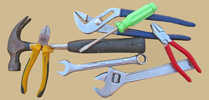November is the time to winterize your lawn for a healthy spring time growing season.
Step 1: Pick up fallen branches, lawn clutter and anything else that may cause a dead spot in the lawn if left out over the winter.
Step 2: Rake up the leaves. Better yet, if the leaves on the lawn are less than two inches deep, mow them into the lawn. Set the blade on the mower up just a bit and then slowly go over the lawn, chopping up the leaves and dropping them back onto the grass. The added nutrients will help feed the grass well into the spring.
Step 3: Sometime after the first frost and preferably before the first snow, mow the grass one final time. Set the blade height just below two inches to insure the grass remains healthy. Cutting the grass too short will impede its ability to absorb nutrients throughout the winter.
Step 4: Fertilize the lawn one final time with a quick release fertilizer. Apply no more than one pound of nitrogen per 1000 square feet of lawn. A little math will help determine what fertilizer to use. The concentration of nutrients appears on the label as a percentage of total weight. A 40 pound bag of fertilizer labeled 13-13-13 contains 13% (or 5.2 pounds) of each nitrogen, phosphorus and potassium [40 x .13 = 5.2]. Spreading this fertilizer over a 10,000 square foot area would distribute just over one half pound of each nutrient per 1000 square feet [5.2 / 10]. This rate is ideal for final winter fertilization. Applying the same fertilizer over a 5,000 square foot area would increase the distribution of nutrients to 1.4 pounds per 1000 square feet. At this rate, the chances of lawn disease are increased, as are the chances of ground water contamination. When it comes to winter lawn fertilization, less is best.
So mow the grass, do the math and give your lawn a final sprinkling of the right amount of nutrients before month end. Then sit back and let the snow fly, knowing that come spring, the grass will be a little greener on your side of the fence.
Email us at info@you-can-fix-it.com to request new fix-it ideas. We also encourage you to add comments or suggestions below each article.
| You-Can-Fix-It.com
|


Leave a Reply